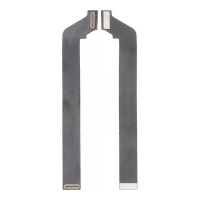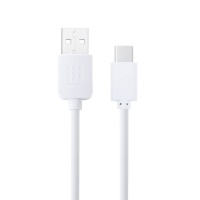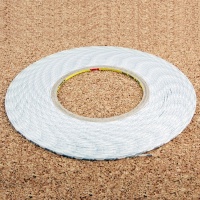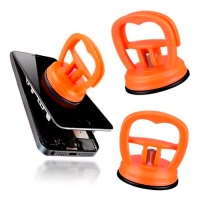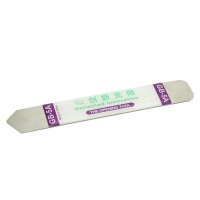 Repair parts Xiaomi Mi 9T
Repair parts Xiaomi Mi 9T


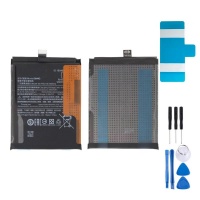
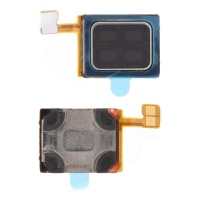
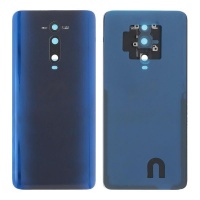
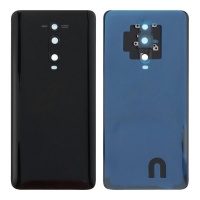
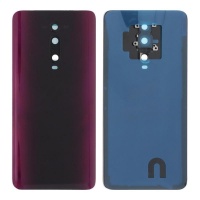
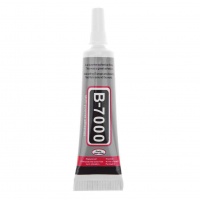
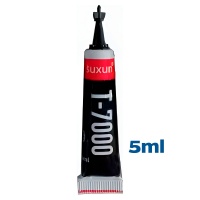
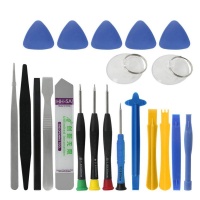
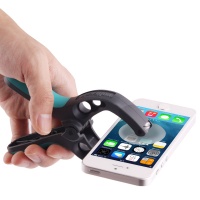
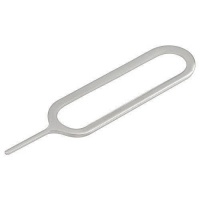

Receive it on tuesday 9 de december


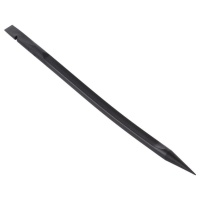
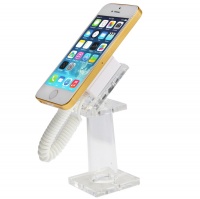
Your Xiaomi Mi 9T / Redmi K20: Get to Know It Inside Out and How to Keep It Like New 📱
The Xiaomi Mi 9T, known in some markets as the Redmi K20, burst onto the mobile phone scene as a tremendously attractive proposition, winning the hearts of many users for its balance between high-end features and a reasonable price. This device not only stood out in its time but continues to be a much-loved and perfectly functional phone if properly maintained. Its popularity is largely due to it being a "mid-range champion," offering features usually found in more expensive terminals.
Among its hallmarks is its impressive 6.39-inch AMOLED display that covers almost the entire front, free of any notch or hole-punch thanks to an ingenious motorised 20-megapixel pop-up front camera system. This is complemented by a powerful triple rear camera system, with a 48MP main sensor capable of capturing highly detailed images. Inside, the Qualcomm Snapdragon 730 processor ensures smooth performance for most tasks and games. Furthermore, its build quality is top-notch, with an elegant glass body on both the front and back (protected by Corning Gorilla Glass 5) and a sturdy aluminium frame. The fact that the Mi 9T and the Redmi K20 are essentially the same phone broadens the availability of information and, most importantly, compatible spare parts, making maintenance easier.
Why Repair Your Mi 9T / Redmi K20: A Smart and Sustainable Decision
In a world where technology advances by leaps and bounds, the temptation to switch mobiles at the first sign of trouble is strong. However, repairing your Xiaomi Mi 9T / Redmi K20 is a decision with multiple advantages. Firstly, the economic saving is considerable when compared to the cost of a new device with similar features. Additionally, choosing to repair is a gesture of sustainability, as you help to reduce electronic waste, a growing global problem. And we can't forget the personal satisfaction of giving a second life to a phone that, like the Mi 9T, is still very capable.
With the right spare parts and a bit of skill (or the help of a technician), your Mi 9T can continue to function optimally for much longer. Given its initial popularity and the features it offered, many users value this model and prefer to repair it rather than discard it, which maintains an active demand for its components.
Features of the Original Mi 9T / Redmi K20 Screen: Total Immersion✨
The screen is, without a doubt, one of the jewels of the Xiaomi Mi 9T / Redmi K20. We are talking about a 6.39-inch AMOLED panel with a FullHD+ resolution of 2340 x 1080 pixels and an aspect ratio of 19.5:9, all protected by the resilience of Corning Gorilla Glass 5. This original AMOLED technology translates into an outstanding visual experience: vibrant and realistic colours, truly deep blacks that enhance contrast and make images "pop" from the screen, and good energy efficiency, especially when displaying dark tones. It also supports HDR, which further enhances the visual quality of compatible content.
Thanks to its innovative pop-up front camera, the Mi 9T offers an uninterrupted "all-screen" experience, achieving an impressive screen-to-body ratio of approximately 86.1%. This means you enjoy more screen in a compact body, ideal for consuming multimedia content or gaming.
Common Screen Problems: When Do You Need a Replacement?
Despite its quality, the screen is one of the most exposed components to damage. You will know you need a replacement if your Xiaomi Mi 9T shows any of these symptoms:
- Cracked or shattered glass: The most common cause, usually from drops or knocks.
- Colour spots, dead or stuck pixels: Dots or areas that do not display the correct colour or remain black, white, or a fixed colour.
- Vertical or horizontal lines: Coloured or black stripes appearing on the screen.
- Flickering: The image shudders or flickers intermittently.
- Black screen: The phone turns on, but the screen shows no image, although the touch function might still work (or not).
- Touch problems: The digitiser does not respond to touch, responds erratically, or there are "dead zones" where it doesn't detect a press.
- Low or uneven brightness: The screen looks very dark even with the brightness at maximum, or has areas with different illumination.
Types of Replacement Screens for Xiaomi Mi 9T / Redmi K20: Options and Differences
When the time comes to change the screen on your Mi 9T, you will find several options on the market. It is essential to understand the differences to make the best decision according to your needs and budget:
-
AMOLED and OLED Screens: These are the technologies that most closely resemble the quality of your Mi 9T's original screen. They offer intense colours, pure blacks (because individual black pixels turn off), excellent contrast, and generally a good level of brightness. They are usually thinner, which allows for a perfect fit in the phone's chassis. A crucial feature, especially for the Mi 9T, is that quality OLED/AMOLED screens are compatible with the under-display optical fingerprint sensor. The sensor needs to "see" the fingerprint through the screen, and the structure of OLEDs allows this, whereas other technologies may prevent it. On the downside, they are usually the most expensive option.
-
INCELL Screens: INCELL technology integrates the touch panel (digitiser) and the LCD into a single layer, resulting in thinner screens than traditional TFT LCDs. They offer a good balance between image quality, a generally fast touch response, and a more moderate cost than OLEDs. The colours can be sharp and bright, although they do not reach the depth and vibrancy of an AMOLED. In terms of power consumption, they are usually more efficient than conventional LCDs. Compatibility with the fingerprint sensor can vary with INCELL screens, so it's important to verify this before purchase.
-
TFT (LCD) Screens: These are the most economical alternative for replacing your Mi 9T's screen. However, this price reduction usually comes with lower image quality compared to OLED and INCELL screens. Colours can be less vibrant, viewing angles more limited, and blacks tend to look more greyish, as the backlight is always on. A very important point to consider is that, in the case of the Xiaomi Mi 9T, replacement TFT screens are generally NOT compatible with the fingerprint sensor. Furthermore, they can be slightly thicker and consume a little more power.
-
Original or "Original Quality" Screens: You will often see terms like "Original Pulled," "Service Pack," or simply "Original." "Original Pulled" screens are usually dismantled from other devices or those that strictly meet the manufacturer's specifications. However, many "original" screens sold in the replacement parts market are not manufactured directly by Xiaomi, but by third-party companies that produce high-quality components that are equivalent or very close to the factory-fitted ones. For a phone like the Mi 9T, which originally has an AMOLED screen, a quality "original" replacement should also be AMOLED to provide the most faithful experience. The key lies in the technology and the reliability of the supplier.
How to Choose the Right Screen for Your Mi 9T / Redmi K20?
The choice will depend on several factors:
- Your budget: TFTs are the cheapest, followed by INCELLs, and finally OLEDs/AMOLEDs as the premium option.
- Feature priority: If maintaining the functionality of the under-display fingerprint sensor is essential for you, you must opt for a quality OLED or AMOLED screen. If you are looking for the highest colour fidelity and the best visual experience, these are also your choice.
- Trust in the supplier: Purchasing spare parts from trusted stores like iLevante.com ensures you receive a product of the expected quality and with a warranty. We will advise you so you can choose the screen that best suits your needs.
Basic Guide to Screen Replacement (General Steps, Precautions)
Replacing the screen of the Xiaomi Mi 9T is a delicate repair that requires patience and the right tools. Although we always recommend seeking a professional if you lack experience, here are some general steps and precautions:
Precautions:
- Work in a clean, well-lit, and static-free environment (use an anti-static wrist strap if possible).
- Have all the necessary tools at hand.
- Discharge the battery to below 25% before starting.
- Once the phone is open, disconnect the battery as soon as possible.
- Test the new screen before fully sealing the phone. Temporarily connect it and verify that both the image and the touch function work correctly.
- Do not excessively bend the flex cables.
General Steps (the Mi 9T opens from the back cover):
- Turn off the device completely and remove the SIM tray.
- Apply moderate, even heat to the back cover to soften the adhesive holding it to the frame.
- Use a suction cup to gently lift an edge of the cover and create a small opening. Insert a thin plastic plectrum.
- Carefully slide the plectrum around the entire perimeter to cut the adhesive and separate the back cover. Be careful of any nearby flex cables.
- Once the cover is removed, locate and disconnect the battery connector.
- Disconnect the flex cables that connect the old screen to the mainboard. There may be metal shields you need to remove (keep the screws safe).
- Remove the faulty screen. If it is badly broken, be careful with the glass shards.
- Place the new screen, connect its flex cables and the battery cable. Turn on the phone to test it.
- If everything works, proceed to reassemble the phone in reverse order, applying new adhesive for the back cover.
We strongly recommend looking for specific video tutorials for the Xiaomi Mi 9T / Redmi K20, as they will show you the process in detail.
Comparative Table of Screen Technologies for Xiaomi Mi 9T / Redmi K20
| Feature | TFT LCD | INCELL LCD | OLED / AMOLED |
|---|---|---|---|
| Colour Quality | Standard, less vibrant | Good, sharp colours | Excellent, vibrant, pure blacks |
| Brightness | Adequate | Good | Very Good / Excellent |
| Power Consumption | Higher | Moderate | Lower (especially with darks) |
| Thickness | Thicker | Thinner than TFT | Very thin |
| Fingerprint Sensor (Mi 9T) | Not Compatible | Variable (check first) | Compatible |
| Cost | Low | Medium | High |
This table will help you quickly visualise the key differences. Remember that fingerprint sensor compatibility is a decisive factor for many Mi 9T users.
Xiaomi Mi 9T / Redmi K20 Battery: Diagnosis, Models, and Replacement 🔋
Original Mi 9T / Redmi K20 Battery Specifications
Battery life is a crucial factor in any smartphone, and the Xiaomi Mi 9T / Redmi K20 is equipped with a 4000 mAh Li-Po (Lithium Polymer) battery, which is not easily user-removable. This capacity provides good longevity for daily use. As for specific battery models, for the Xiaomi Mi 9T and Redmi K20, the commonly referenced model is the BP41. For the Pro version (Mi 9T Pro / Redmi K20 Pro), the model is usually the BP40, although both phone versions (standard and Pro) share the original 4000 mAh capacity.
In terms of charging, the Xiaomi Mi 9T supports 18W fast charging, while the Mi 9T Pro raises this figure to 27W with Qualcomm Quick Charge 4+ technology. It is important to note that the charging speed depends not only on the battery but also on the phone's charging circuit and the charger used.
Signs of a Faulty Battery: Does Your Mi 9T Need a New One?
Over time and with charge cycles, all batteries degrade. If you notice any of the following symptoms on your Mi 9T, it is very likely you need a battery replacement:
- Drastic decrease in battery life: The battery drains much faster than before, forcing you to charge the phone several times a day.
- Unexpected shutdowns: The phone suddenly turns off, even when the indicator shows there is still battery left.
- Erratic battery percentage: The charge level drops sharply (e.g., from 50% to 10% in a few minutes) or makes inexplicable jumps.
- The phone won't turn on or gets stuck on the logo: Even after charging it for a while, the device won't start or constantly reboots on the Xiaomi or MIUI logo.
- Swollen battery: This is a dangerous sign. If you notice the back cover of your Mi 9T is lifting or deforming, the internal battery has swollen and must be replaced immediately to avoid further damage or safety risks.
- Excessive overheating: If the battery heats up abnormally during charging or normal use, it could be a sign that it is faulty.
- Charging problems: The phone won't charge, charging is intermittent, or you have to wiggle the cable to make contact. Although this can also be due to a faulty charging port, a damaged battery can also exhibit these problems.
OEM Batteries without a Logo: Are They a Good Option? Quality and Reliability
When looking for a replacement, it is common to find "OEM batteries." OEM stands for Original Equipment Manufacturer. In the context of batteries, this means they are produced by the same manufacturer that makes the original batteries for Xiaomi or to the same specifications and quality controls, but they are sold without the Xiaomi brand logo.
The main advantage of OEM batteries is that they usually offer a quality and performance very similar or identical to the original battery, but at a more competitive price. This makes them an excellent alternative for restoring your Mi 9T's autonomy without spending a fortune. However, it is crucial to be cautious, as the market can also have low-quality imitations deceptively sold as OEM. Therefore, trust in the seller is paramount. At iLevante.com, we carefully select our OEM batteries to ensure they meet quality and reliability standards, offering you a safe and economical solution for your Xiaomi Mi 9T.
Brief Guide: How to Safely Change the Battery in Your Mi 9T / Redmi K20
Changing the Mi 9T's battery involves handling internal components and the battery itself, which carries certain risks if not done carefully (a punctured lithium battery can catch fire). If you don't feel confident, it's best to go to a professional. For the more hands-on, here is a general guide:
Precautions:
- Discharge the battery to below 25% to minimise risks in case of accidental puncture.
- Turn off the phone completely.
- Work on a clean, clear, and non-conductive surface.
- Use plastic tools to avoid short circuits.
General Steps:
- Open the device: As mentioned in the screens section, the Mi 9T is opened by removing the back cover. Apply gentle, even heat to the edges of the back cover to soften the adhesive.
- Using a suction cup and plastic plectrums, carefully lift and cut the adhesive around the back cover. Proceed slowly to avoid damaging the cover or any internal flex cables.
- Disconnect the old battery: Once the cover is off, locate the battery flex connector on the mainboard. It is usually covered by a small metal shield that you will need to unscrew. Disconnect the battery flex with a plastic tool.
- Remove the old battery: The battery is usually stuck to the chassis with strong adhesive strips. Look for specific pull-tabs to make removal easier. If not, you can very carefully apply a small amount of isopropyl alcohol around the edges to soften the adhesive. Avoid using metal tools to pry directly on the battery or bending it excessively.
- Install the new battery: Place the new battery in its place. If the new battery comes with adhesive strips, use them. Connect its flex to the mainboard.
- Test before closing: Before re-sealing the back cover, temporarily connect the necessary components and turn on the phone. Check that it recognises the new battery and that it starts charging.
- Seal the phone: If all is correct, apply new double-sided adhesive specific for back covers (or the one that came with your replacement part) and re-place the back cover, pressing firmly to ensure a good seal.
For a more visual and detailed process, we recommend searching for specific video tutorials for changing the battery of the Xiaomi Mi 9T or Redmi K20.
Back Covers for Xiaomi Mi 9T / Redmi K20: Colours and How to Replace Them 🎨
The Importance of the Back Cover: More Than Just Aesthetics
The back cover of your Xiaomi Mi 9T / Redmi K20 is not just a design element that gives it that elegant and premium finish, characteristic of its glass construction (Corning Gorilla Glass 5). It serves vital functions such as protecting the delicate internal components (battery, mainboard, cameras) from dust, moisture, and light impacts. Furthermore, it contributes to the structural integrity of the phone, helping to keep everything in place. A back cover in good condition is therefore crucial for the longevity and proper functioning of your device. Its 3D curved design also improves the ergonomics and grip of the phone.
Originally Available and Replacement Colours
The Xiaomi Mi 9T was originally launched in three distinctive and attractive colours, which enhanced its design with light effects and textures:
- Carbon Black: An elegant and sober finish, often with a subtle carbon-fibre-like pattern under the glass.
- Flame Red: A vibrant and eye-catching colour, with a gradient effect that simulates flames.
- Glacier Blue: A light and refreshing blue tone, also with light effects and gradients.
Fortunately, if you need to replace the back cover of your Mi 9T, at iLevante.com we usually stock replacement parts in these same original colours, so you can restore your phone to its initial look or even change its style if you prefer.
Material and When You Should Change It
As we've mentioned, the back cover of the Xiaomi Mi 9T is made of glass, which gives it a premium feel and appearance but also makes it susceptible to breaking in case of a fall. You should consider changing the back cover if:
- It is broken or cracked: Even a small crack can compromise protection against dust and moisture, and can worsen over time or cause cuts.
- It has very deep scratches that affect its aesthetics or feel.
- The original adhesive has lost its effectiveness and the cover is starting to peel off at the edges.
A damaged cover not only mars the look of your device but also leaves its internal components vulnerable.
Simple Steps to Change the Back Cover of Your Mi 9T / Redmi K20
Replacing the back cover is one of the simplest repairs you can perform on your Mi 9T. You will need some basic tools like a heat gun or hairdryer, a suction cup, plastic plectrums, and, of course, new adhesive for the cover.
General process:
- Turn off the phone: Make sure the device is completely switched off.
- Apply heat: With a heat gun on a low setting or a hairdryer, evenly heat the edges of the back cover. This will soften the adhesive that bonds it to the phone's frame. Do not concentrate the heat on one spot for too long.
- Create an opening: Place a suction cup near one of the edges (preferably the bottom) and gently pull upwards. When a small gap is created, insert a thin plastic plectrum or a thin card into the slot.
- Cut the adhesive: Carefully slide the plastic plectrum around the perimeter of the phone, between the cover and the frame, to cut the adhesive. You may need several plectrums to keep the already separated areas open. Be especially careful if there are any flex cables near the edges, although on the Mi 9T the main ones are more centred.
- Remove the old cover: Once all the adhesive is cut, the cover should lift off easily.
- Clean the residue: Remove any remaining old adhesive from both the phone's frame and the cover itself if you are going to reuse any component (like the camera glass, although replacement covers usually include it). A clean surface is crucial for a good bond with the new cover.
- Apply the new adhesive: Replacement covers often come with their own pre-installed adhesive or with custom-cut adhesive sheets. If not, you will need to apply a specific liquid adhesive for mobiles or thin, strong double-sided tape. Apply it to the phone's frame or the new cover, following the contour.
- Place the new cover: Carefully align the new back cover with the phone's frame and press it down firmly on all edges so the adhesive sets well. You can carefully use clothes pegs or rubber bands to maintain pressure for a few hours while the adhesive fully cures, ensuring a tight seal.
And that's it! Your Xiaomi Mi 9T will look as good as new and will be protected once again.
Essential Spare Parts for Your Xiaomi Mi 9T / Redmi K20: The Most Wanted 🛠️
When a component of your Xiaomi Mi 9T / Redmi K20 fails, knowing the exact spare part you need is the first step to bringing it back to life. Fortunately, this model has a somewhat modular design, which makes it easier to replace specific parts without having to change the entire phone. This is not only more economical but also more sustainable. Below, we present the 5 most in-demand and relevant spare parts for this device, along with key information about them:
1. Complete Screen (LCD/OLED Display + Touch Digitiser): Your Window to the Digital World.
The screen is undoubtedly one of the components that suffers the most and one of the most replaced. This complete module includes both the panel that displays the image (LCD or OLED, depending on the quality) and the touch-sensitive glass (digitiser) that allows you to interact with the phone.
Function: To display the graphical user interface of the operating system and applications, and to register touch inputs and gestures.
Common Problems: Cracked or shattered glass from drops, dead or burnt-in pixels (especially on OLEDs if static images are left on for a long time), colour spots, vertical or horizontal lines, flickering, black screen (no image), null or erratic touch response, or dead zones on the touch screen.
When to Replace: When physical damage is evident, the image quality is severely compromised, or the touch function stops working correctly, preventing normal use of the device.
Relevant Information: As detailed earlier, for the Mi 9T it is crucial to choose the appropriate screen technology (TFT, INCELL, OLED/AMOLED) based on your budget and whether you want to retain the functionality of the under-display fingerprint sensor, which is only compatible with quality OLED/AMOLED screens. At iLevante.com, we offer various qualities so you can find the one that best suits you.
2. Battery: The Power That Moves Your Day.
The battery is the energy heart of your Mi 9T. Over time and with charge cycles, its capacity and performance inevitably decline.
Function: To store and supply the electrical energy needed for all the phone's components to work.
Common Problems: Significant reduction in autonomy (drains very quickly), unexpected shutdowns even with remaining charge indicated, the phone only works when plugged in, a swollen battery (very dangerous, the back cover bulges), excessive overheating during charging or use, or it doesn't charge properly.
When to Replace: When the battery life is no longer sufficient for your daily needs, if it shuts down without warning, or, imperatively, if you detect that it is swollen.
Relevant Information: The Mi 9T uses a 4000mAh battery (models BP41 or BP40 depending on the version). At iLevante.com, you can find replacement batteries, including high-quality OEM options that offer performance similar to the original at a more accessible price.
3. USB Type-C Charging Connector: The Vital Port for Charging and Data.
The USB-C port on your Mi 9T is essential not only for charging the battery but also for transferring data to a computer and, in some cases, for connecting headphones or other accessories.
Function: To allow current to enter for charging the battery and to establish data communication with other devices via a USB-C cable.
Common Problems: The phone doesn't charge or charging is intermittent (you have to wiggle the cable for it to charge), it charges very slowly despite using a compatible fast charger, the USB cable doesn't fit well in the port (it's loose or too tight), the computer doesn't recognise the phone when connected, or the internal pins of the connector are damaged, bent, or have ingrained dirt that cannot be cleaned.
When to Replace: When careful cleaning of the port does not solve the problem and you have ruled out that the fault is with the USB cable or the charger.
Relevant Information: This connector is usually mounted on a small printed circuit board (PCB) which often also integrates other components like the main microphone or antenna contacts. Replacing it can fully restore charging and data functionality.
4. Back Battery Cover: Protection with Style.
The elegant glass cover of the Mi 9T not only defines its aesthetics but also protects the internal components.
Function: To cover and protect the battery, mainboard, and other internal circuits from dust, moisture, and impacts. It is a fundamental element of the phone's design.
Common Problems: Cracks, complete shattering (especially after a fall), deep scratches that mar its appearance, or the perimeter adhesive weakening and the cover starting to separate from the frame.
When to Replace: When the damage is such that it compromises the protection of the internal components, has sharp edges, or simply for aesthetic reasons to restore the mobile's original look.
Relevant Information: It is made of glass (Gorilla Glass 5) and is available in the Mi 9T's original colours: Carbon Black, Flame Red, and Glacier Blue. Replacing it is one of the simplest and most visually impactful repairs.
5. Earpiece Speaker: To Hear Your Calls Clearly.
This is the small speaker you hold to your ear to hear the person you are talking to during a phone call.
Function: To reproduce the audio of phone calls directly to your ear.
Common Problems: You can't hear anything or the volume is very low during calls (forcing you to use the speakerphone), the sound is distorted, crackly, or metallic, making it difficult to understand the conversation.
When to Replace: When the call audio quality is poor and you have ruled out that it is a signal issue, a volume setting problem, or an issue with the other person's phone.
Relevant Information: It is a small but absolutely essential component for a phone's main function: making and receiving calls. Its replacement is usually relatively straightforward once the device is open.
Other Key Components and Spare Parts for the Xiaomi Mi 9T / Redmi K20 ⚙️
In addition to the most common spare parts, there are other components in your Xiaomi Mi 9T / Redmi K20 that may need to be replaced to ensure its proper functioning. The interconnection of many of these via flexible cables (flex) means that sometimes a seemingly major problem can be fixed by changing a relatively inexpensive cable.
Main Speaker / Buzzer (Loudspeaker): Powerful Sound for Multimedia and Hands-Free.
This is the speaker responsible for playing ringtones, notifications, music, video audio, and the sound when you activate hands-free mode during a call. If you notice that your Mi 9T emits no sound, the volume is very low, or the audio is distorted or of poor quality in these situations, it is likely that the main speaker or "buzzer" is damaged.
LCD Flex Cable for Xiaomi Mi 9T / Mi 9T Pro / Redmi K20 / K20 Pro: Vital Connection for Your Screen.
This flexible cable is the communication bridge between the mainboard and the screen module. It transmits both the image data you see and the signals from the touch panel. If you experience problems like lines on the screen, no image, intermittent touch failures, or if these problems appear after a knock or a previous repair, the LCD flex cable could be damaged, poorly connected, or pinched. In some cases, replacing just this flex can solve the problem without needing to change the entire screen module, which means a saving.
Rear Cameras and Protective Lens: Capture the World Anew.
The Mi 9T features a triple rear camera system (main, wide-angle, and telephoto) which is one of its standout features. If your photos come out blurry, the camera app closes unexpectedly, it doesn't focus correctly, or spots appear (that aren't external dirt), there could be a problem with one of the camera modules. The glass lens that protects these cameras can also get scratched or broken, affecting the quality of the photos. Fortunately, both the camera modules and the protective lens glass are replaceable.
Pop-Up Front Camera Mechanism and Motor: The Heart of Your Selfies.
The 20MP pop-up front camera is a distinctive feature of the Mi 9T. This complex mechanism includes the camera module itself and a motor that raises and retracts it. If the camera doesn't go up or down, does so with difficulty, makes strange noises, or the front camera itself shows no image or is not detected by the system, the problem could be with the motor, the lifting mechanism, or the camera's flex cable.
Mainboard Interconnection Flex Cable (Main Flex): Essential Internal Communication.
This flex cable is crucial for communication between the main mainboard and other sub-boards in the phone, such as the one housing the charging connector, the microphone, or the vibrator. If this cable gets damaged, it can cause a variety of seemingly unrelated failures: charging problems, the microphone not working, no vibration, or even the phone not turning on if the power communication is interrupted.
SIM Tray and SIM Reader: Stay Connected.
The SIM tray is the removable part where you place your SIM card. If it breaks or gets lost, you won't be able to use your mobile line. The SIM reader, on the other hand, is the component (often on the mainboard or a small flex) that makes contact with the SIM card. If the phone doesn't detect the SIM card (and you've tested that the SIM works in another phone), the problem could be with the reader.
Physical Buttons (Power, Volume) and their Flex Cables.
The power and volume buttons are in constant use. Over time, they can get stuck, stop responding, or have an intermittent response. Often, the problem is not with the external physical button, but with the internal mechanism or the flex cable that connects them to the mainboard, which can wear out or get damaged.
Special Mention: Spare Parts for Other Xiaomi Models.
Although this article focuses extensively on the Xiaomi Mi 9T / Redmi K20, at iLevante.com we understand that the Xiaomi family is large and popular. That's why our catalogue includes spare parts for a wide variety of models. If, for example, you are looking for an earpiece speaker for a Redmi 9T (a different model from the Mi 9T, with an LCD screen and a 6000mAh battery) or even for other terminals like the Redmi Note 9T, we invite you to explore our online shop. It is important not to confuse these models, as their parts are not usually interchangeable, but we want you to know that our goal is to cover your repair needs for multiple Xiaomi devices.
Common Problems of the Xiaomi Mi 9T / Redmi K20: Hardware Diagnosis and Solutions 🔩
Review of Frequent Hardware Failures (Beyond Screen and Battery)
The Xiaomi Mi 9T / Redmi K20, like any electronic device, can develop various hardware faults with use and time. Correctly identifying the source of the problem is key to a successful repair. Some of the most common failures, apart from the aforementioned screen and battery issues, include:
- Persistent Charging Problems: If you have ruled out the cable and charger as the problem, and the battery is new or in good condition, the fault could lie with the phone's USB-C charging connector itself, the charging board to which it is soldered, or even the interconnection flex that communicates between this board and the main mainboard.
- Various Audio Failures: If you can't hear ringtones or music, the main speaker (buzzer) could be faulty. If you can't hear well during calls, the problem would be the earpiece speaker. If others can't hear you, the microphone (which is usually on the charging board or a separate component) could be the culprit.
- Stuck or Non-Functional Pop-Up Camera: A characteristic failure of this model. It can be due to problems with the lifting motor, the physical mechanism itself, or the flex cable that connects the front camera to the mainboard.
- Connectivity Problems: Difficulty connecting to Wi-Fi networks, a weak or non-existent Bluetooth signal, or a GPS that doesn't get a fix or is very inaccurate. These problems can originate from the internal antennas, their connection cables, or even the connectivity modules on the mainboard itself. Sometimes, a GPS problem that isn't fixed by calibration can indicate a hardware fault.
- Unresponsive Buttons: If the power or volume buttons get stuck, don't "click," or simply don't perform their function, the problem may be with the physical button itself, its internal mechanism, or more commonly, the flex cable they are associated with, which may have been damaged or disconnected.
- Excessive Overheating: Although overheating can often be linked to the battery or demanding software, if it is constant and very high, it could be a symptom of a more serious problem on the mainboard, such as a short circuit or a faulty component.
It's important to understand that one symptom can have multiple causes. For example, a phone that doesn't turn on doesn't always mean the battery is dead. It could be a damaged charging connector preventing the battery from receiving power, a broken interconnection flex cable that doesn't transmit that power to the mainboard, or even a faulty power button that doesn't close the circuit to start the device.
How a Specific Spare Part Can Fix a Seemingly Complex Problem
The good news is that many problems that seem catastrophic can be solved by replacing a specific and relatively inexpensive component. For example:
- A phone that won't charge could be revived simply by changing the USB-C charging connector module.
- Problems of no sound or distorted sound are solved by replacing the corresponding speaker (earpiece or main).
- A GPS that doesn't work, after ruling out software issues, might require changing the GPS antenna module.
- If the phone doesn't detect the SIM card, the problem could be a broken SIM tray or the SIM reader itself, which is sometimes integrated with other components like the charging port.
Before giving up on your Mi 9T, consider that the solution might be simpler than it seems.
Basic Diagnosis: Clues to Identify the Failed Component
Although a precise diagnosis sometimes requires technical knowledge, as a user you can follow some clues:
- Observe the symptoms carefully: When does the fault occur? Is it constant or intermittent? Does it affect a specific function or several?
- Perform simple tests: If it doesn't charge, try another cable and charger. If the audio fails, try with headphones. If an app causes problems, check if other similar apps work.
- Restart the device: A simple reboot sometimes fixes temporary problems.
- Look for patterns: Does overheating happen only when gaming or also at rest? Does the battery drain quickly all the time or only with certain apps?
Sometimes, a problem that seems like hardware, such as excessive battery drain or a malfunctioning GPS, can have its origin in the software. That's why it's also important to consider this possibility, as we'll see in the next section.
A Technical Look at the Software Problems of the Xiaomi Mi 9T / Redmi K20 👨💻
Not all problems affecting your Xiaomi Mi 9T / Redmi K20 originate from a damaged physical component. The software, especially Xiaomi's MIUI customisation layer, can sometimes be the source of abnormal behaviour that can even be mistaken for hardware failures. From a repair technician's perspective, it is always advisable to rule out software issues before proceeding to dismantle the device.
Common Software Problems (MIUI) That Can Be Mistaken for Hardware Failures
Some of the most reported software issues by Mi 9T users that could simulate a hardware failure are:
- Excessive Battery Drain: This is one of the most common. Some MIUI updates, particularly the move to Android 10 (MIUI 11) and later MIUI 12, were noted for causing abnormal battery consumption on the Mi 9T. Users reported that the "Android System" or "Google Play Services" were consuming a disproportionate percentage of power. This could lead one to wrongly think that the physical battery is degraded.
- Lag, Freezes, or Slowdowns: The phone can become slow, animations choppy, or even freeze and become unresponsive for a time. A user might attribute this to an ageing processor or lack of RAM, when in fact it could be poor software optimisation.
- Unexpected Reboots or Bootloops: The device reboots on its own for no apparent reason, or worse, gets stuck in a boot loop, showing the Mi or Android logo over and over without fully starting the system. This can be alarming and seem like a serious mainboard failure.
- Specific Application Errors: Recurring failures in the camera app (it closes, doesn't save photos), problems with the GPS not positioning correctly or losing signal, Bluetooth not connecting or audio stuttering, or notifications not arriving or being delayed.
- Problems with Updates: Failures during the system update process, or the appearance of new problems right after updating.
- Bricked Device (Phone "Brick"): In the worst-case scenario, the phone can become completely unusable, not starting up in any way. This sometimes happens after a failed attempt to flash a custom ROM, a corrupt update, or a serious system error.
When a Software Problem Might Require Technical Attention or Affect Hardware
While many software problems can be solved with the right steps, there are situations where a technician's intervention may be necessary, or where the software could end up affecting the hardware:
- Persistent Bootloops or Bricked Device: If the phone does not respond to standard software recovery methods (like entering recovery or fastboot mode for a reset), it may be necessary to use more advanced tools and methods, such as flashing the factory ROM via EDL mode (Emergency Download Mode) with tools like MiFlash. This process is more complex and carries risks if not done correctly, so an experienced technician might be the best option.
- Software-Induced Overheating: Poorly optimised software or a runaway process can cause the phone to overheat constantly. In the long term, this thermal stress could accelerate the degradation of the battery or even damage other sensitive components on the mainboard.
Basic Tips From a Repair Technician's Perspective (Software)
Before concluding that you need a hardware replacement, a technician will always exhaust the software-level solution possibilities. Here are some steps you can try:
- Restart the phone: It's the first and often the simplest and most effective step.
- Check for Updates: Make sure that both the MIUI operating system and your apps are updated to the latest available version, as they may include bug fixes.
- Clear Cache: Clear the cache of the apps that are causing problems. If the problem is general, you can try clearing the system cache partition from recovery mode (if available and you know how to access it).
- Disable App Autostart: Some apps start automatically and consume resources in the background. Review and disable autostart for those that are not essential.
- Test in Safe Mode: Booting into Safe Mode loads the system with only the pre-installed apps. If the problem disappears in this mode, it is very likely that a third-party app is the culprit. Uninstall recent or suspicious apps.
- Calibrate the Battery: If the problem is rapid drain or erratic percentages, a calibration (fully discharging it and then charging it to 100% without interruption) might help.
- Review App Permissions: Make sure apps have the necessary permissions to function correctly and revoke any that seem excessive.
- Factory Reset: As a last resort, and always after making a full backup of your data, you can perform a factory reset. This will erase all your personal information and settings, returning the software to its initial state.
If you suspect a more serious problem like a brick or a bootloop that is not solved by these steps, you can research how to flash the official stock ROM using tools like MiFlash. However, be aware that this is an advanced process that, if done incorrectly, can worsen the situation. If you are not sure, seek professional help.
This approach of first ruling out software problems can not only save you money on unnecessary spare parts but is also the standard procedure a good technician would follow, demonstrating a genuine intention to solve your problem in the most efficient way.
Basic Repair Guides: Go on and Repair Your Mi 9T / Redmi K20! 💪
If, after diagnosing the problem with your Xiaomi Mi 9T / Redmi K20, you have concluded that you need a hardware replacement and feel confident enough to try it yourself, go for it! Repairing your own device can be a rewarding experience. That said, preparation is key.
Essential Tools for the Aspiring Technician
Having the right tools will not only make the job easier but will also reduce the risk of damaging any components. For most Mi 9T repairs, you will need a basic kit that includes:
- Precision screwdriver set: Essential. You will need small bits, especially Phillips type (PH00, PH000) for the Mi 9T's internal screws.
- Plastic plectrums (spudgers, opening tools): For separating components, disconnecting flex cables, and cutting adhesives without scratching or damaging parts.
- Suction cup: Very useful for lifting the screen or back cover to create an initial opening.
- Heat gun or hairdryer: Necessary to soften the adhesives that seal the back cover and sometimes the screen. Use with caution to avoid overheating. -
- Anti-static tweezers: For handling small screws and flex cables with precision.
- Anti-static wrist strap (recommended): To prevent damage from electrostatic discharge to sensitive components.
- Replacement adhesive: Double-sided tape specific for mobiles or suitable liquid adhesive to re-seal the back cover or the new screen.
- Isopropyl alcohol: Useful for cleaning old adhesive residue.
- Gloves (optional): To avoid leaving fingerprints on components.
- Safety goggles (recommended): Especially if working with broken glass.
Some replacement parts, like screens, sometimes include a small basic tool kit.
General Precautions Before Starting Any Repair
Before diving into the guts of your Mi 9T, keep these important precautions in mind:
- Do your research: Watch several specific video tutorials for the repair you are going to perform on your Xiaomi Mi 9T / Redmi K20. Each model has its own quirks.
- Organisation: Work in a well-lit, clean, and clear area. Have a system for organising screws and small parts as you remove them (a magnetic mat or drawing a diagram of the phone can help).
- Battery: For safety, try to have the phone's battery below 25% charge before you start. A fully charged lithium battery is more likely to catch fire if accidentally punctured.
- Disconnect the battery first: As soon as you have access to the inside of the phone and it is possible, disconnect the battery connector from the mainboard. This will prevent accidental short circuits while you work on other components.
- Patience and no rushing: Don't force any component. If something doesn't come out easily, check if you have missed a screw or if there is a flex cable still connected. Patience is your best friend.
- Be careful with flex cables: They are delicate and can tear or be damaged easily. Use plastic tools to disconnect them and avoid bending them excessively.
- Static electricity (ESD): Electronic components are sensitive to static electricity. If possible, use an anti-static wrist strap connected to a ground. At a minimum, touch a large, grounded metal object before you start and periodically during the repair to discharge yourself.
- Do not reinstall damaged parts: If a battery is swollen or a flex cable is visibly damaged, do not attempt to reinstall it.
Summary of Key Steps for Common Repairs (Reinforcement)
Although each repair has its details, here we reinforce the general steps for the most common ones on the Mi 9T:
- Screen Replacement: Remember that the Mi 9T opens from the back cover. You will need to remove it (with heat and plectrums), disconnect the battery, then the shields and flex cables holding the old screen (including the one for the fingerprint sensor if it's integrated or nearby). Connect the new screen and test it thoroughly (image, touch, brightness, fingerprint sensor if it's OLED) BEFORE reassembling and sealing everything.
- Battery Replacement: Similar to the start of the screen replacement, remove the back cover and disconnect the old battery. Peeling the battery off the chassis can be the trickiest part due to the strong adhesives. Use the pull-tabs if it has them, or apply moderate heat from the screen side (carefully) or a little isopropyl alcohol around the edges of the adhesive to make it easier to remove. Do not bend or puncture it.
- Back Cover Replacement: This is the simplest repair. Apply heat to the old cover, separate it with plectrums, clean the adhesive residue from the phone's frame thoroughly, apply the new adhesive to the new cover or the frame, align carefully, and press down firmly.
Important Consideration: The difficulty of each repair varies. Changing a back cover is relatively easy, but replacing a screen or a component soldered to the mainboard requires more skill and patience. Be honest with yourself about your abilities. If at any point you feel unsure or the task becomes overwhelming, it is better to stop and go to a professional technical service. At iLevante.com, in addition to spare parts, we can guide you.
Find All the Spare Parts for Your Xiaomi Mi 9T / Redmi K20 at iLevante.com ✅
You have reached the end of this exhaustive guide on spare parts for your Xiaomi Mi 9T / Redmi K20! We hope all this information is very useful for you to better understand your device, diagnose possible problems and, if you dare, embark on the adventure of repairing it yourself!
At iLevante.com, we are passionate about technology and believe in giving your devices a second chance. That's why we invite you to explore our extensive online catalogue, where you will find a large selection of high-quality spare parts specifically for your Xiaomi Mi 9T, Mi 9T Pro, Redmi K20, and Redmi K20 Pro. From screens with different technologies to batteries, charging connectors, back covers, cameras, flex cables, and much more.
Why Choose iLevante.com for Your Spare Parts?
- Wide Selection: We have a wide variety of components so you can find exactly what you need for your Mi 9T / Redmi K20.
- Guaranteed Quality: We offer spare parts of different qualities (TFT, INCELL, OLED, OEM) to fit all budgets, always prioritising reliability and good performance.
- Detailed Information: Each product on our website is accompanied by a precise description to help you make the best decision.
- Customer Support: If you have doubts about which spare part is right for your problem or about the installation process, our customer service team is ready to advise you.
- Secure Purchase and Fast Shipping: Enjoy an easy, secure online shopping experience with fast shipping so you can repair your phone without delay.
Don't let a small fault force you to say goodbye to your Xiaomi Mi 9T. Visit iLevante.com today, find the spare part you need, and give your mobile a new lease of life! 🚀

